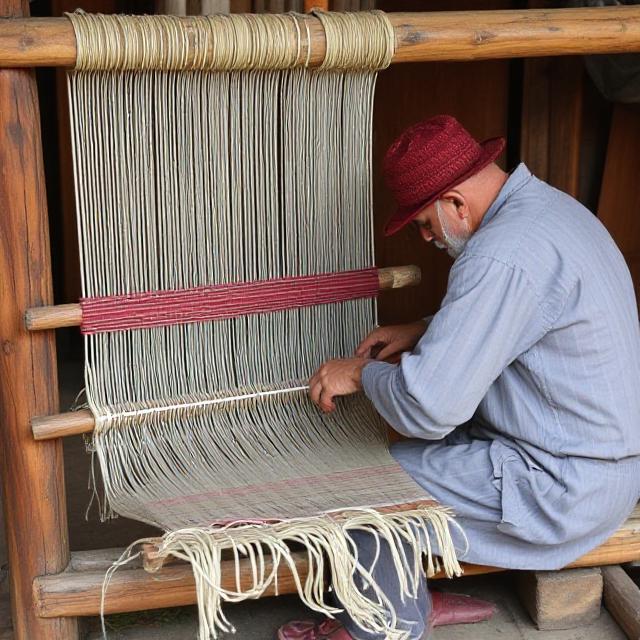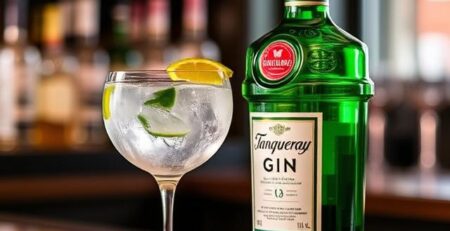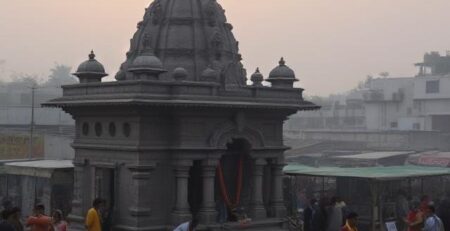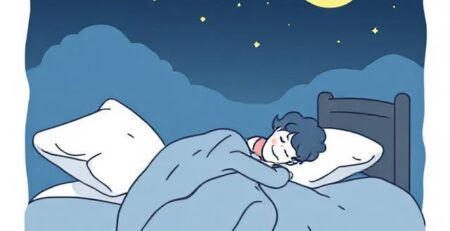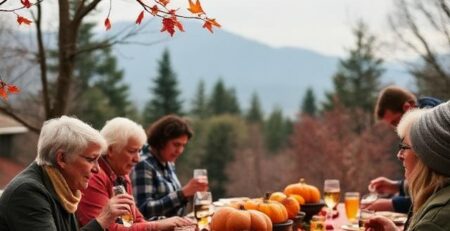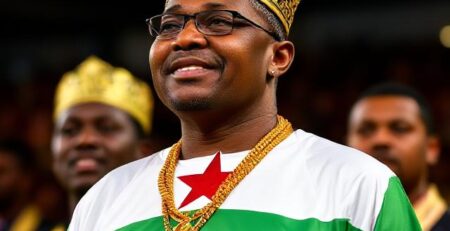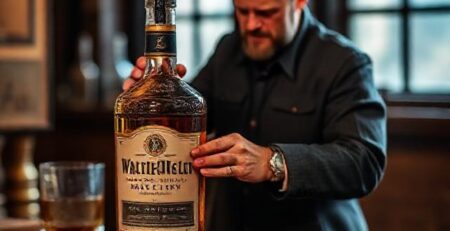Devanga Community: A Legacy of Weaving, Culture & Resilience
1) What is the speciality of the Devanga community?
The Devanga community of South India is widely recognised for its traditional weaving and textile craftsmanship, especially in regions such as Karnataka, Tamil Nadu, Andhra Pradesh and Kerala. Historically, their skill in weaving fine cotton and silk textiles — brocades, superfine cotton cloths etc — earned them a distinct position among artisan castes.
The specialities can be summarised as follows:
- Weaving Legacy: According to the community’s own mythic history, sage Devala Maharshi (also called Devanga Moola Purusha) emerged to teach weaving and clothing the gods and humans.
- Super-fine textiles: They produced high quality cotton and sometimes silk fabrics, with intricate designs, often supplying textiles for upper-caste or ritual use.
- Cultural Identity tied to occupation: Unlike communities that shifted away from their traditional craft, the weaving identity remains strong — for example, many Devangas still engage in weaving or in textile trade.
- Geographic Spread & linguistic diversity: Though originating in one region, the Devanga community has spread across four major South Indian states and speaks multiple languages (Telugu, Kannada, Tamil, Malayalam) depending on region.
- Religious & ritual distinctiveness: They maintain distinct temples, gods, myths, and ritual practices — such as worship of goddess Sri Ramalinga Sowdeshwari Amman (their caste god).
Thus the Devanga community stands out for weaving craftsmanship, rich cultural heritage, broad regional presence and a strong sense of identity.
2) History of Devanga | Telugu & Kannadiga Speakers
The Devanga community’s historical narrative is intertwined with myth, migration, occupational change and regional adaptation.
Mythic Origins
- The community claims descent from Sage Devala Maharshi. According to tradition, Devala was created by Lord Shiva (or emerged from his third eye) to clothe the gods, and taught weaving to humanity.
- He is said to have taken several incarnations (Pushpadanta, Chitrayogi, etc) across the four Yugas to fulfil this mission.
- The word “Devanga” literally can be taken to mean “body (anga) of the gods (deva)”.
Historical Evolution & Migration
- The community initially centred in Andhra-Karnataka regions and migrated into Tamil Nadu, Kerala and other areas under Vijayanagara/Chola empires.
- During colonial times and post-Independence, weaving communities such as the Devangas took up handloom weaving, and later many shifted to power-looms or other textile trade.
- Their weaving and textile trade allowed them to establish markets, associations and socio-economic networks across states (Telugu & Kannada speaking regions included).
Linguistic Profile
- In Andhra Pradesh / Telangana, many Devangas speak Telugu and are often referred to as Devanga Chettiar or Devangar.
- In Karnataka, they speak Kannada and are found among Lingayat Devanga segments.
- In Tamil Nadu / Kerala, many speak Tamil or Malayalam and integrate with the local weaving economy.
Thus the history of the Devangas is one of craft lineage, migratory spread, regional adaptation and weaving-driven identity.
3) Devanga Community in Andhra, Tamil Nadu, Kerala and Karnataka
Andhra Pradesh / Telangana
In Andhra/Telangana, the Devanga community has strong representation among weavers in the Godavari districts. They are known for weaving fine cotton and silk fabrics, brocades etc.
Many Telugu‐speaking Devangas identify as Devanga Chettiar or Devangar, and engage in weaving as well as cloth-merchandise trade.
Karnataka
In Karnataka, the Devanga community is significant, especially among Lingayat‐Affiliated Devangas. According to Census / ethnographic data:
- The community features as one of the old weaver castes.
- Studies highlight the challenges faced by Devangas in Karnataka as power-loom shifts and younger generation moving away from hand‐loom weaving.
- There are community Sanghas (associations) such as the Banashankari Devanga Sangha in Bengaluru (est. 1980) working for social upliftment and cultural continuity.
Tamil Nadu
In Tamil Nadu, Devangas are present under names such as Devangar (Tamil variant). They worship goddess Sri Ramalinga Sowdeshwari Amman and hold caste gatherings. Their weaving markets (for sarees etc) are prominent in Kongu and Coimbatore belt.
Kerala
In Kerala, though smaller in numbers compared to other states, Devangas also engage in textile trades, particularly in weaving and cloth-merchandise distribution. Their presence reflects cross-state mobility of weaving communities.
Cross-State Characteristics
- Despite regional differences, common threads include weaving tradition, cultural rituals, caste god worship, linguistic adaptation.
- Across states they often classify under the Backward Classes category (for welfare purposes).
4) Devanga Caste God
The Devanga community’s primary deity (or caste god / Kuladevata) is Sri Ramalinga Sowdeshwari Amman (also spelled Sowdeswari or Chowdeshwari).
Legend & Significance
- According to tradition, when Sage Devala was attacked by demons, he prayed for Shakti (Divine Mother). She appeared as Chowdeshwari with trident and lion, killed the demons. The threads of those demons became the cloths woven by Devangas.
- The goddess is thus considered the protector of the weaver community and their patron deity for weaving and thread-work.
- Temples dedicated to her are found in Karnataka, Tamil Nadu, Andhra and other Devanga localities. These temples serve as social & cultural centres for the community.
Rituals and Festivals
- Many Devanga community associations celebrate the birthdate (Jayanthi) of Devala Maharshi and other festivals linked to the goddess.
- Unique rituals such as Alagu Sevai (self-wounding with a sword as ritual offering) are performed by some Devanga devotees of Chowdeshwari.
Thus the caste god for Devangas is deeply rooted in their weaving heritage and their community identity.
5) Devanga Caste Gotra
The concept of gotra in the Devanga community is complex, given their non-Brahmin cast status and the regional variance in customs. Historical sources and community documents indicate:
- Devangas claim descent from Devala Maharshi and sometimes identify their gotra as deriving from him.
- Some records show that Devangas had Sanskritised gotras as part of social mobility, though their occupational identity remained artisan.
- However, specific widely-documented lists of gotras (like Brahmin rishi-gotras) are less visible for Devangas in public scholarship.
Practical Observations
- In many Devanga communities the marriage norms avoid same‐lineage (e.g., within same clan or “kul”) rather than strictly same gotra prohibited marriages.
- Because Devangas also have sub-castes (e.g., “Devanga Lingayat”, “Devanga Chettiar”), regional customs vary.
- If you belong to a Devanga family and want your gotra, it is often passed by family elders, traditional registers or community sangha records.
In short: The gotra exists as a socio-religious lineage marker in the Devanga community, but its documentation is less formalised than in classical Brahmin gotra systems.
6) How to Identify Devanga Weaving Style & Culture
Weaving Characteristics
- Fine cotton or silk base cloth, often with intricate motifs and good finishing.
- In many regional clusters the men weave at the loom, women do yarn spinning or dyeing.
- Some Devanga weaving hubs specialise in superfine sarees (especially in Tamil Nadu/Kannada borders) with unique designs.
Cultural Signals
- Community worship of Sri Ramalinga Sowdeshwari Amman, presence of Devanga Mathas / temples in localities.
- Membership in Devanga Sangha or community association; celebrations of Jayanthi of Sage Devala.
- Linguistic adaptation: depending on region, the Devanga family may speak Telugu, Kannada, Tamil or Malayalam.
Thus one can identify a Devanga community member or weaving tradition by weaving skill, temple affiliation, community involvement and regional textile network.
7) Challenges and Resilience of the Devanga Community
Challenges
- A recent study by the University of Mysore (2025) found that power-looms and industrial mechanisation are displacing traditional hand-loom weavers in the Devanga community of Karnataka.
- Younger generation increasingly unwilling to continue weaving as an occupation — opting for other jobs.
- Economic distress during COVID-19 impacted rural artisan families heavily.
- Social mobility and educational uplift remain uneven in some regions despite craft heritage.
Resilience & Response
- Many Sanghas and community organisations (e.g., Banashankari Devanga Sangha) work to promote education, cultural events, youth training, and weaver welfare.
- Some Devanga weavers are adapting by upgrading to ‘power-loom’ or semi-mechanised looms, introducing new textile designs, exporting.
- Revival of handloom, aesthetic handicraft markets, state/central artisan support schemes provide new opportunities for weaving families.
Thus although the community faces structural shifts, its resilience through culture, adaptation and community organisation remains strong.
8) Why the Devanga Community Matters
- The Devangas are an important part of India’s handloom/weaving heritage — their craft has contributed to the textile economy, especially in South India.
- Their multi-state presence shows how craft communities migrated, adapted and built networks across linguistic/regional boundaries.
- The weaving identity of Devangas offers a living example of craft-based culture, artisan economy, and socio-cultural continuity.
- Policies supporting artisan communities often look at groups like the Devangas for sustainable livelihoods, craft preservation and regional development.
9) Conclusion
The Devanga community, with its weaving legacy, regional spread, rich cultural traditions and resilience in the face of change, stands as a vibrant symbol of South India’s artisan heritage. From the mythic sage Devala to the temple of Ramalinga Sowdeshwari Amman, from the looms of Andhra and Karnataka to the revival efforts of today — the story of the Devangas is a story of craft, identity and continuity.
For anyone interested in the history of weaving, caste-based artisan identities, regional culture of South India or social mobility of craft communities, the Devanga community offers an illuminating case. Understanding their specialty, history, caste god, gotra traditions and current challenges gives us deeper insight into how traditional artisan castes negotiate modernity, craft economy and cultural preservation.


